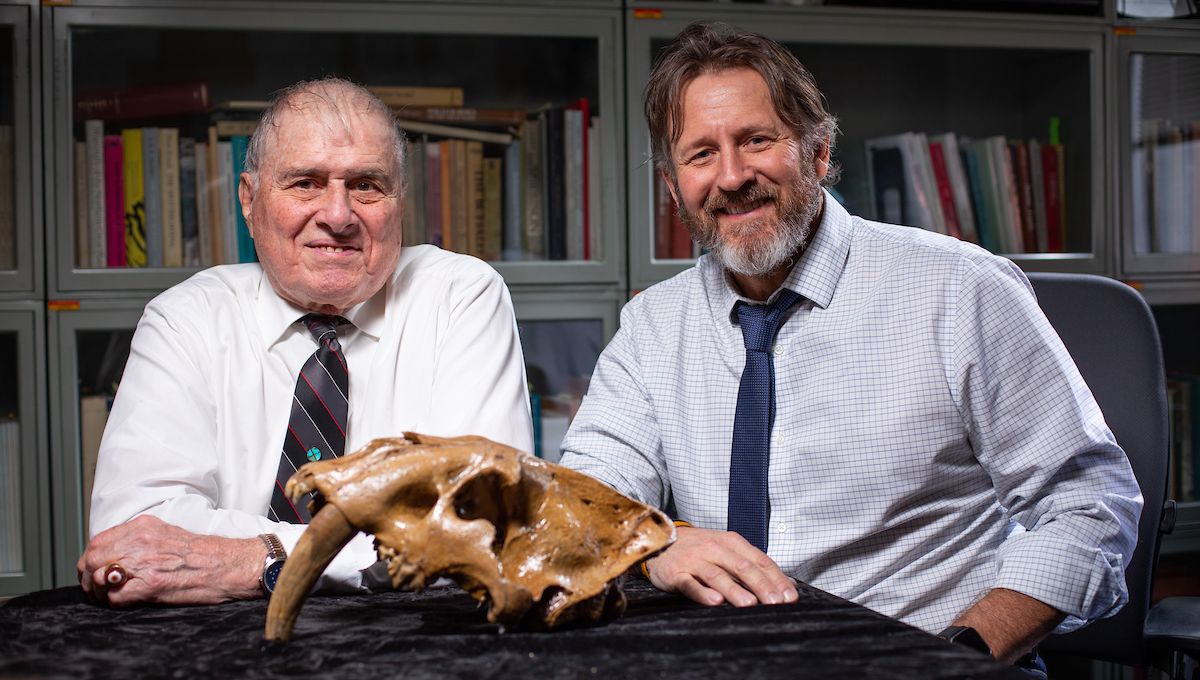
The complete skull of a sabertooth cat has been unearthed in a “near perfect condition” in southwest Iowa. Not only is this incredible specimen providing insights into this extinct beast’s lifestyle, but it’s also the first evidence the prehistoric predator once inhabited this central part of North America.
The incredible skull was discovered in Page County, Iowa, not far from the East Nishnabotna River. Radiocarbon analysis suggests the sabertooth cat died between around 13,605 and 13,460 years ago, indicating it was one of the very last of its kind before the species fell into extinction at the end of the Ice Age.
“The skull is a really big deal. Finds of this animal are widely scattered and usually represented by an isolated tooth or bone. This skull from the East Nishnabotna River is in near perfect condition. It’s exquisite,” Matthew Hill, an associate professor of archaeology at Iowa State, said in a statement.
There were a few types of sabertooth cats. This one belonged to the species Smilodon fatalis, which could weigh up to 300 kilograms (around 650 pounds), similar in weight to a Siberian tiger.
Around 70 sabertooth remains have been found across the US, most notably in the Rancho La Brea Tar Pits of Los Angeles where a collection has been found. However, this is the first time one has been discovered in Iowa.
“We think southwest Iowa during this period was a parkland with patches of trees interspersed with grassy openings, somewhat similar to central Canada today,” added Hill. “The cat would have lived alongside other extinct animals like dire wolf, giant short-faced bear, long-nosed peccary, flat-headed peccary, stag-moose, muskox, and giant ground sloth, and maybe a few bison and mammoth.”
The researchers believe the skull belonged to a young male, perhaps no older than 2 or 3 years old when it died. This estimation was based on the condition of their permanent teeth and the gaps between the skull’s boney plates, which suggests it was still growing.
Although still a youngster, he would still have been a force to be reckoned with, weighing up to 250 kilograms (550 pounds).
The researchers explain that this beast most likely hunted giant ground sloths, which were common in Iowa during the Ice Age. In fact, they suspect that this individual might have died while taking down one of these colossal creatures. It’s not certain, but the sabertooth’s broken canine hints that it might have suffered an unpleasant injury that ultimately led to its death.
Building on this initial work, the team hopes to carry out a geochemical analysis of the skull to get a clear idea of its diet. This, they hope, could help to illustrate a clear image of the Ice Age food webs between sabertooths, giant sloths, moose, and short-faced bears.
“You are what you eat, and it’s locked in your bones,” Hill added.
The study is published in the journal Quaternary Science Reviews.
Source Link: “Exquisite” Sabertooth Cat Skull In Iowa Is A Stunningly Rare Discovery